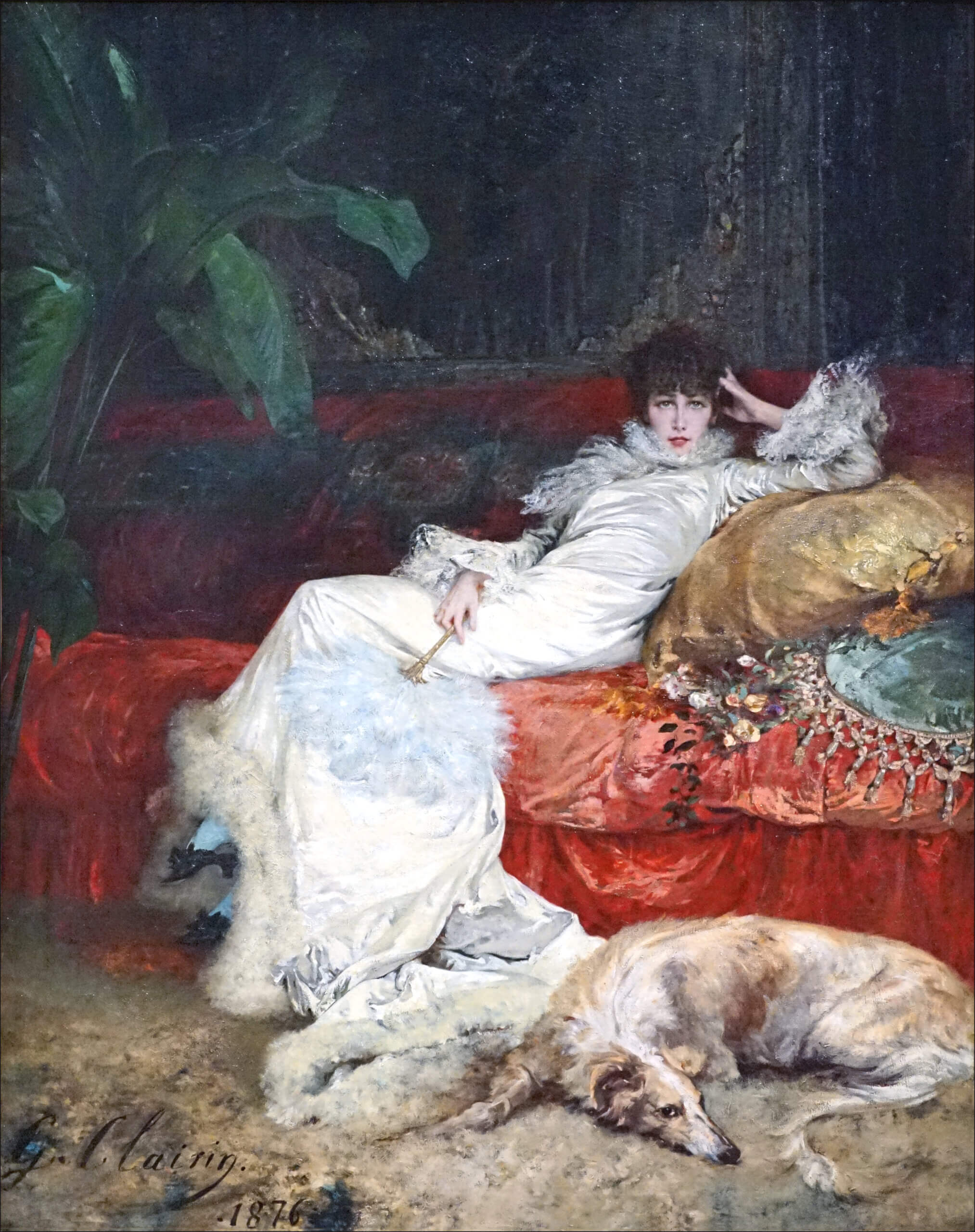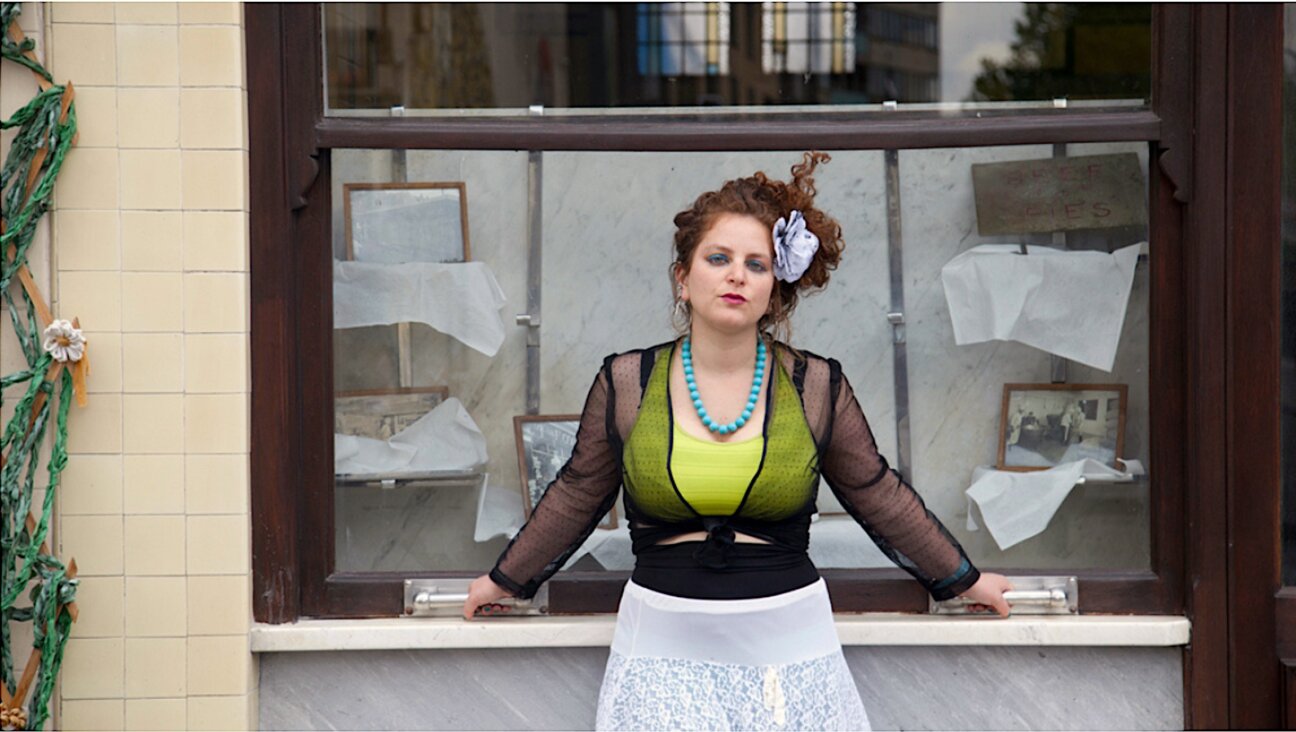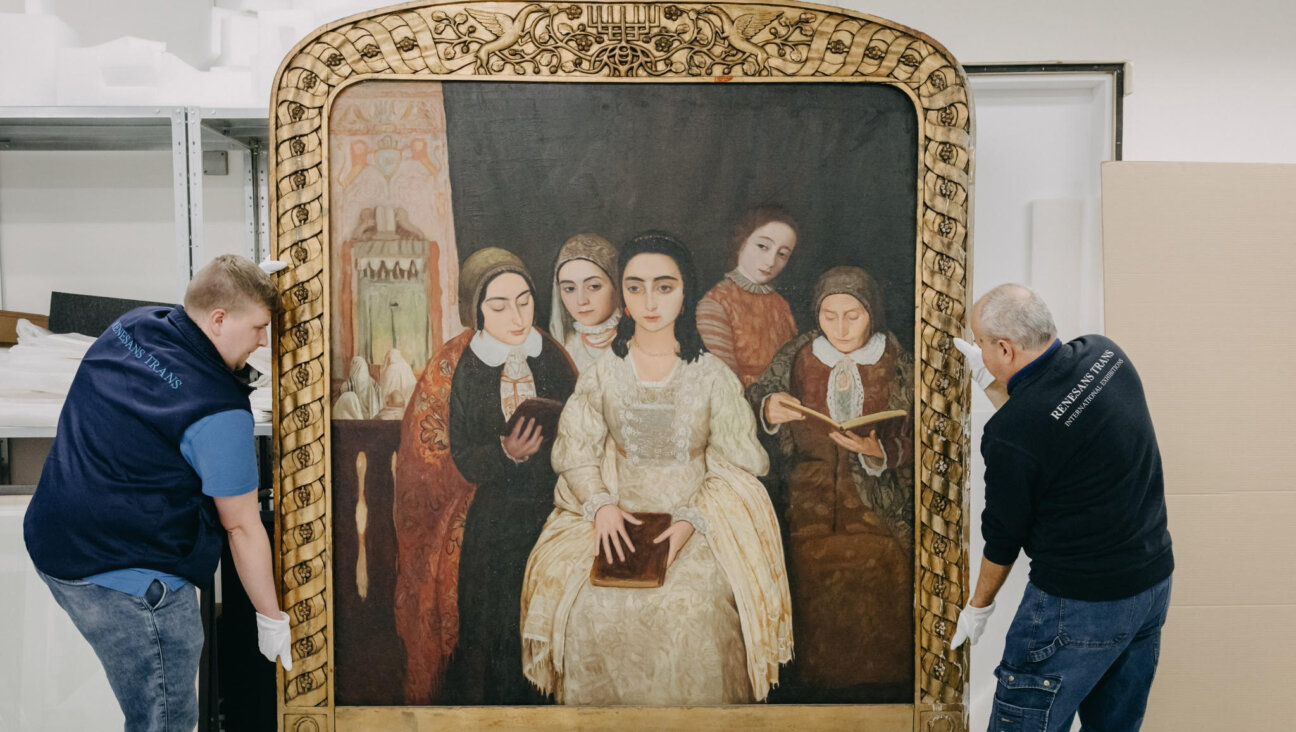Why the poet Anna Margolin wrote a 1915 column about actress Sarah Bernhardt’s leg
Margolin hoped it would help women think more about female courage, self-fulfillment and even self-sacrifice for a higher cause.

Graphic by Angelie Zaslavsky
In 1905, the French-Jewish actress Sarah Bernhardt was performing in Rio de Janeiro, when she badly injured her right knee. Ten years later, in February 1915, her leg was partially amputated. Yet Bernhardt — the first truly international stage star — continued to perform on stage and in films until weeks before her death in 1923.
Three months after the amputation, the celebrated Yiddish poet and columnist Anna Margolin (1887-1952) wrote about Bernhardt’s leg for the Yiddish daily Der Tog (The Day). The reason why is nothing less than fascinating.
Margolin defies easy categorization. She published only one volume of poems (Lider, 1929, translated into English in 2005), but scholars of Yiddish verse see her as one of the most original talents of the earlier 20th century.
She was born Rosa Lebensboym in Brisk, Lithuania. After emigrating to New York City in 1906, she returned to Europe. She then lived for a time in Tel Aviv until settling permanently in New York in 1913. In 1914, she began writing a weekly column called “In der Froyen-Velt” (In the Women’s World), for Der Tog. She used the pseudonym Anna Margolin for her poems; the column was published under her original name, Rosa Lebensboym.
Like her fellow Tog writer Miriam Karpilove, Margolin/Lebensboym was expected to write primarily for female readers. Tellingly, “Froyen-Velt” always appeared on the last page of the paper. But it gave her a platform for observations about women’s lives.
How journalist Anna Margolin engaged her women readers
The article from May 23, 1915 — mostly about Bernhardt’s leg — is a vivid example of how Margolin engaged female readers. Choosing to write about Sarah Bernhardt was not inherently remarkable. The superstar actress was Jewish, though the article never specifically mentioned this fact. But Margolin’s take on Bernhardt’s amputation was remarkable. Letters and documents make clear that the 70-year-old Bernhardt decided to remove most of her leg after the accident on stage left her with excruciating pain and mobility issues. But the Tog column embraced a very different explanation.
Margolin based her interpretation of the amputation on a sonnet about Bernhardt which she attributed to the French playwright, Edmond Rostand (although some sources believe it was written by his son, Maurice, who knew the actress well and wrote several starring roles especially for her). Entitled “Sarah,” the poem contended that Bernhardt had her leg removed in solidarity with the many young soldiers who lost limbs fighting in World War I. She deliberately chose to disfigure her own body for France, he wrote. In this way she became the literal sister in bloodshed of the countless Frenchmen sacrificing their bodies on the battlefields. The sonnet praised the actress for her incomparable patriotism and heroic — even saintly — self-mutilation. He even attributed to her these words: “I wish to be wounded like they [the soldiers] are. And the wound should be grave.”
Margolin enthusiastically endorsed Rostand’s interpretation of Bernhardt’s valor. “Can we believe the poem on this point? Certainly we can,” she wrote. Rostand, Bernhardt’s “intimate friend who knows all the passions of her great heart, is a cold and unexcitable man.”
An era when Americans praised French martyrs
Some readers today might be skeptical or distressed by the notion that anyone would disfigure themselves in solidarity with a cause. It’s even tempting to wonder if Margolin, whose poetry sometimes reveals a dark wit, was subtly mocking Rostand. But the modern instinct to scoff at self-sacrifice and heroism was not as automatic as it is today.
More importantly, mocking Rostand’s interpretation of Bernhardt’s “sacrifice” would have been disrespectful toward France’s wounded soldiers. This would have been an untenable attitude as the horrors of 1915 unfolded, and deeply offensive to Tog readers.
Assuming that Margolin believed Rostand’s claims (which seems consistent with her tone and language), why might she have found this explanation attractive? And why would she have shared it with her female audience? Speaking for a mind as complex as Margolin’s is inherently risky, but in a real sense “In der Froyen-Velt” was written by Lebensboym and not by Margolin. This is not the voice of the poet, but of the journalist speaking to her public. Seen in this light, the story of Bernhardt’s leg served a purpose.
The United States had not yet joined the war in 1915, but all eyes were looking toward Europe. Americans could feel that they were supporting the war effort by extolling French martyrs. More specifically, Margolin seemed to be encouraging American women to explore their potential for heroism within their own lives.
An example of female courage and even self-sacrifice for a higher cause
Of course there was only one Sarah Bernhardt, whose “extraordinary, almost superhuman love” for the soldiers, as Margolin put it, allowed “her body to be literally cut.” But mere mortals among women could nonetheless derive strength from the actress’ example. They could dare to think more openly about issues of female courage, self-fulfillment and even self-sacrifice for a higher cause — whatever that might mean to each individual. Most daringly, women could contemplate full ownership of their bodies and the intoxicating freedom to choose what to do with them.
This interpretation is supported by the next section of the column. (“Froyen-Velt” typically addressed multiple topics). Margolin moved on to praise and quote the American artist, poet and activist, Rose O’Neill. O’Neill, like Margolin, strongly supported women’s suffrage. She wrote eloquently about the creative potential of women once they were liberated from the shackles in which men had put them. O’Neill is quoted (in Yiddish translation) as saying: “Can it be expected that an enslaved woman should create freely? We should become free, then you will see.” Once women are free to express themselves creatively, who knows how many Bernhardt-like acts of greatness — in art and in life — would be possible.
Freeing women also meant urging less constricting women’s garments
The final section of the column moved into a lighter and more humorous vein, but was consistent with the first two. Margolin described O’Neill’s quest for the “polymuriel hat” as a complement to the “polymuriel dress”. These were both part of the early 20th-century American movement for sensible, less constricting women’s garments that could be worn over and over in all kinds of social situations. This led Margolin into a bitingly satirical history of women’s headgear beginning in 1850. She emphasized the discomfort, ugliness and impracticality of every type of hat within living memory. Her hope that something better would soon come along was part of her overall message. Women have the right to break free of societal constraints and live unencumbered, creative and passionate lives.
In other words, the saga of Sarah Bernhardt’s leg, enhanced by the words of Rose O’Neill and reflections on fashion, allowed Margolin to agitate for women’s right to self-determination. At the same time she could maintain the decorous distance of a professional newswoman in the world of 1915. She exhorted through example and quotation — lightened with a dose of humor — rather than directly in her own voice. But the message seems clear. Women would not be waiting in the wings much longer, but would be taking center stage. Perhaps sporting polymuriel dresses and hats, brilliant female artists in the spirit of Bernhardt — and of course of Margolin herself — were poised to make their indelible mark on the world.
















